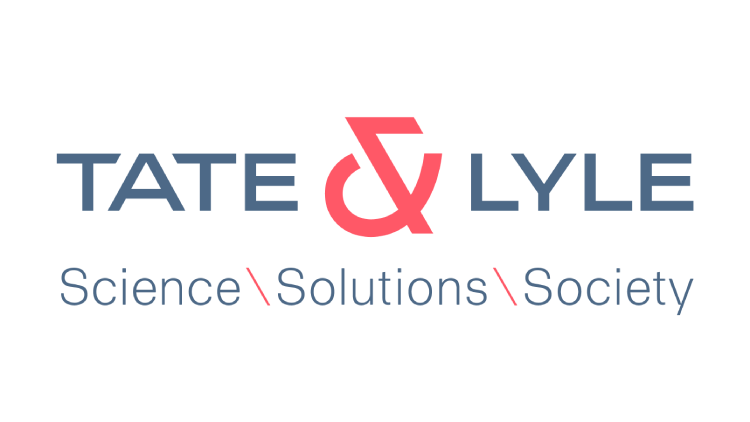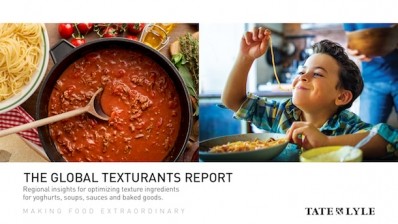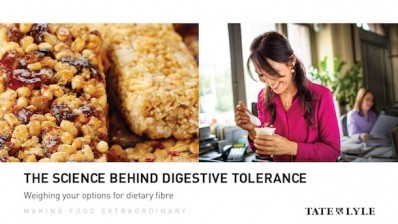Promotional Features
Formulating with tapioca clean-label functional starches
Formulating with tapioca clean-label functional starches
Ingredient labels are more important than ever to consumers and food manufacturers. Survey after survey shows consumers read labels, base their buying decisions on their content and are willing to pay more for certain attributes. These trends are driving a surge in launches of clean-label products. Yet, in developing these products, manufacturers have learnt some clean-label starches have limitations. Tate & Lyle developed CLARIA Bliss tapioca starch to address these shortcomings.
The introduction of CLARIA Bliss into European markets follows years of rising interest in clean-label food products. In 2015, clean-label products accounted for 28% of all launches, according to Innova Market Insights. The 70,536 clean-label products launched that year represented a doubling in introductions since 2010, giving the sector a compound annual growth rate (CAGR) of 14.9%. As such, the ballooning of new products in the clean-label sector is far outstripping the rate of growth across the food industry as a whole.
Each of the 70,000 clean-label launches in 2015 was based on knowledge of consumer trends. An Innova survey in 2016 found 60% of people often or always read food and beverage labels, and close to three-quarters of Americans think it is important to know and understand most of the ingredients on a label. Similarly, 86% of people in the European Union consider a food to be processed if its label features ingredients they do not recognise. The Hartman Group’s 2015 Health & Wellness report found two-thirds of consumers only look for foods with ingredients they know.
Against this backdrop of increased consumer scrutiny, manufacturers are simplifying ingredient lists to meet the needs of their customers.
A recent survey, conducted by Innova, makes it clear what types of starches consumers want to see in their products. Almost 90% of people have neutral or positive views about starches from plants they recognise. Corn starch, potato starch, wheat starch, rice starch and tapioca starch all play similarly well with consumers.
These data give manufacturers a clear roadmap for how to reformulate their products — or what to focus on when introducing new lines — to find favor with modern consumers. However, they also force formulators to deal with a class of clean-label starches that pose formulation challenges. Moving from modified to clean-label starches can reduce the range of process tolerance, introduce ingredients with non-neutral flavors and colours and increase costs, in part because in some cases up to 30% more starch must be included to create a similar texture.
The benefits of tapioca
Seeing these limitations were impeding manufacturers’ efforts to simplify their ingredient lists, Tate & Lyle introduced its CLARIA range of functional clean-label starches. The product line was designed to give food manufacturers the functionality and attributes they were used to from working with modified starches — such as comparable process tolerance and inclusion levels and clean taste and colour — while also meeting public demand for simplified, non-GMO labels that are free from E numbers.
Having begun with three products — CLARIA Essential, CLARIA Plus and CLARIA Elite — Tate & Lyle is now introducing CLARIA Bliss, a new line of tapioca based starches.
The latest product is a starch derived from tapioca, a plant native to much of South America and the Caribbean that has permeated consumer consciousness because of its gluten-free status and growing interest in street food from these regions. These trends and attributes contributed to tapioca being the fastest growing clean-label starch from 2010 to 2015, a period in which it experienced a product launch CAGR of 27%.
Some of the characteristics of tapioca starch are naturally well suited to products such as bakery products, sauces, bars, dairy and desserts. Tapioca has a degree of stability inherent to the base that makes it more stable than comparable maize products, allowing for a longer shelf life in use.
However, other aspects of certain clean-label tapioca starches render them a poor fit for use in some of the same applications. The tan-yellow colour of some tapioca starches creates difficulties for formulators who want to use the ingredient in creamy sauces, soups and dairy desserts. In such products, starches that do not affect the white colour of the product are needed.
Applying CLARIA to tapioca
In developing CLARIA Bliss, Tate & Lyle has sought to eliminate these shortcomings while keeping the characteristics and functionality that have made tapioca starch an increasingly popular choice with consumers and manufacturers.
Application of the CLARIA technology to tapioca has yielded an ingredient with a consistently clean flavor — owing to very low levels of residual lipids and proteins — that is also consistently white, making it a good fit for the aforementioned creamy sauces, soups and dairy desserts. Manufacturers can introduce CLARIA Bliss to formulations without changing the colour or taste of the finished product.
Formulators that do so will realize other benefits. Working with CLARIA Bliss enables companies to achieve very high viscosities, such as those required in dairy desserts. When people eat such foods, they perceive them as having high body and thickness. These enhanced sensory attributes are desirable to consumers, but are sometimes associated with a lingering gummy texture that does not readily clear the mouth. This happens when using gum-based products. CLARIA Bliss, in contrast, is designed to have excellent mouth clearing properties when masticated.
CLARIA Bliss can yield cuttable, gel-like textures suitable for custards and flans, and smooth, glossy pudding-like textures needed by manufacturers of other types of products. This range of outcomes is achieved by changing the process conditions. A manufacturer that wants a thickened texture can either adjust their starch levels or introduce shear.
As the CLARIA Bliss line features starches with low, medium and high process tolerance — branded 560, 570 and 580, respectively — companies can pick the product best suited to their production line.
This is particularly important for dairy processing plants. Performing UHT sterilization at over 120℃ is vital to facilities making desserts and other dairy products, but these conditions are too extreme for some clean-label functional starches. In creating a high process tolerance product, Tate & Lyle has provided an option for companies that work at high temperatures, low pH levels or with high-shear homogenizers.
Reformulating to clean-label
The result of these efforts to create a starch with the functionality manufacturers need, enhanced sensory attributes consumers desire and clean-label characteristics people want is CLARIA Bliss. The product line offers process tolerance, shelf stability and colour comparable to the other waxy maize-based products in the CLARIA range, which, in turn, were designed to provide similar functionality to modified food starches.
This has reduced the barrier to reformulating with clean-label starches. Manufacturers now have access to a range of clean-label functional starches tailored to the needs of their products and the lines on which they are produced.
The market forces driving companies to incorporate such starches into their products are not going away. After years of ever-increasing interest in clean-label food products, consumer demands for simplified ingredient lists can no longer be dismissed as a passing trend. Even if they could, there is evidence to suggest food manufacturers would be wise to reformulate their products to satisfy the demands of clean-label consumers.
Surveys have consistently shown consumers are willing to pay a premium for clean-label products. A recent survey from Ingredient Communications, for example, found 73% of people will pay more for a food product that contains ingredients they know and trust. Of the 1,300 people polled in North America, Europe and Asia-Pacific, more than half said they would pay a double-digit price premium for a clean-label product. Almost one-fifth of respondents were willing to pay 75% more.
These trends are set to turn the clean-label sector into a $180 billion a year market by 2020, according to Euromonitor International.The value of getting into this market is clear.
In CLARIA Bliss, Tate & Lyle has developed a product to simplify the decision about whether to enter the clean-label market. The functionality and enhanced sensory attributes of the clean-label tapioca starch mean it is tailored to the needs of producers of dairy desserts and other products that work under a range of processing conditions.





